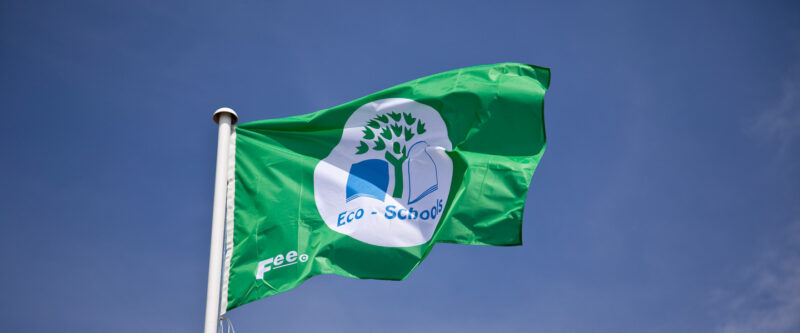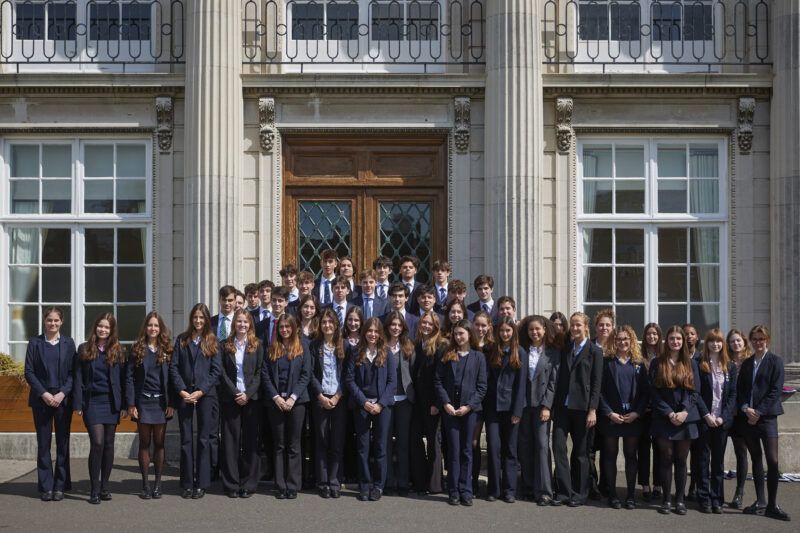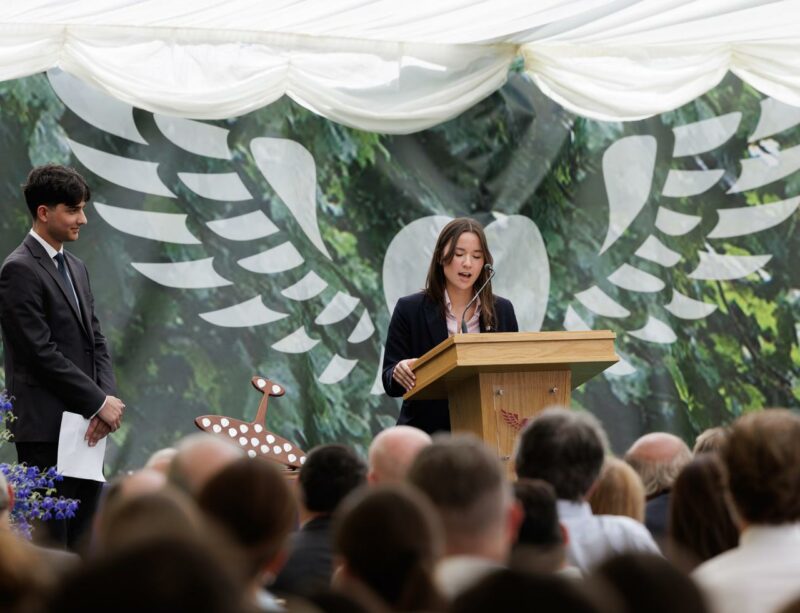This website uses cookies so that we can provide you with the best user experience possible. Cookie information is stored in your browser and performs functions such as recognising you when you return to our website and helping our team to understand which sections of the website you find most interesting and useful.
Battlefields trip opens pupils' eyes to war
The annual Battlefields trip took place from 6-8 March. This report was written by Removes pupil, Christopher Allen.
We left Haileybury for a long drive to our youth hostel in Belgium and arrived at about 10.30pm. Early the following morning, we set off for Vimy Ridge. As we drove we noticed that the ground around us was incredibly bumpy. We were told that this was from shellfire. This was when we realised the scary scale of things that men not much older than us had faced.
After spending the morning in the artificial trenches, looking in awe at the massive mine craters and seeing the outstanding war memorial, "the Spirit of Canada", we left for our first visit to a war cemetery, Delville Wood. It was mind-blowing. I could not believe so many graves were dedicated to only a small percentage of the dead.
Next came the massive Thiepval memorial, dedicated to all the soldiers who had not been found so could not be properly buried. After a short commemoration service, we left for our next location.
Having earlier been to the thoughtfully constructed Delville Wood, the next place came as a surprise. The German cemetery, Langemark cemetery, was made by the Allies after the war. It was therefore not the nicest place in the world. It felt quite different to earlier, as the graves were black instead of white, and there were some graves with three or four people in each.
Our final visit of the day was to Beaumont Hamel, renamed Newfoundland Park after the Newfoundland Regiment which had fought so bravely there. This was a barren stretch of land on which they had fought and it was where the Allies advanced the least throughout the whole war. It gave one a good idea of what it was like to go "over the top" and into no-man’s land.
Our first destination on day two was Tyne Cot cemetery, the largest Allied cemetery of all. In this one cemetery, there were 12 000 people. It was the most moving of all the places we visited and I found it very hard to get my head around so many wasted lives.
Following a visit to our second German cemetery, we went to a museum at Sanctuary Wood, where we were shown picture slideshows with some quite gruesome pictures. There were lots of pictures and artefacts from the war and there were also some great trenches which had been reconstructed.
Finally, we left the museum for a visit to the town of Ypres. In the war this was a very vulnerable position, as it was on a ‘salient’. This meant that the Allied front line surrounded the town and the enemy could bombard it with shells from all directions. We spent the rest of the day shopping for chocolates in the Belgian shops and exploring the town. There was an enormous cathedral and cloth hall in the town which had been carefully reconstructed after it had been blown to pieces during the war and all of the buildings looked as if they had been built in the 1700s.
After a couple of hours shopping in the town, we left Belgium for our trip home after a great weekend.




